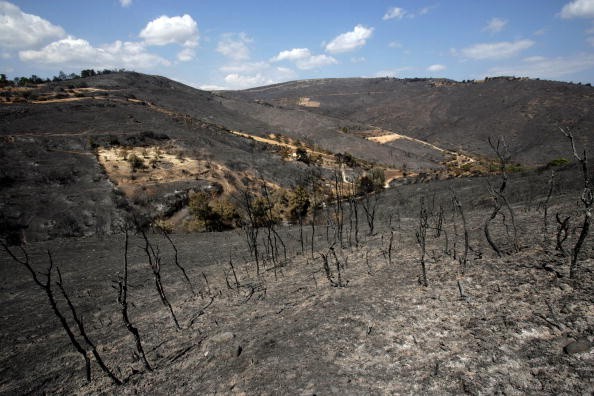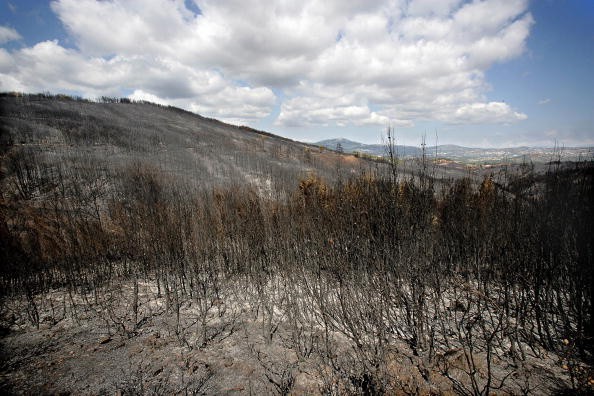Every year, wildfires consume millions of acres of land and it leaves changed landscapes that are susceptible to flooding. But it is less known that these regions already left susceptible can also intensify, triggering thunderstorms in some cases.

Wildfire Burn Scar
Normally, wildfire burn scars are left with small vegetation and very dark soil surface that is likely to repel instead of taking in water. These changes in soil properties and vegetation leave the land more vulnerable to flooding and erosion, so little rainfall can cause a severe flood and debris flow than in an environment that hasn't been disturbed.
Burn scars can also trigger or rejuvenate thunderstorms and this can increase the risk of both flooding and lightning that could ignite more fires in the surrounding region, as research carried out by atmospheric scientist Elizabeth Page and colleague has shown.
Low soil moisture, lack of vegetation, and lower surface albedo are three things contributing to the possibility of burn scars triggering thunderstorms - essentially how well it sends back sunlight. When soil that fire has already burnt is darker, it takes in more energy from the sun.
Surface Temperature over Burn Scar Region
These factors add to increased surface temperatures over the burn scar region compared to untouched regions close by. The difference in temperature can drive air currents, prompting convection which is the motion of warmer air increasing and sinking of cooler air.
As that increasing warm air pulls in more humid air from nearby regions, it brings about the production of cumulonimbus clouds and even thunderstorms that can prompt rain and flooding.
In flash flood analysis that happened on burn scars in 2003 in Australia, scientists discovered that the moisture of the soil was low and its reflective power in the burn region had reduced from 0.2 to 0.08.
Putting that into perspective, an albedo of charcoal is about 0.04 and new snow is close to the maximum of 1.

The Discovery
When those changes were simulated in a computer model, the scientists discovered that had it been the land weren't burned, more than a tenth of an inch of rain would have taken place. Rather, those changes brought 1.25 inches and serious flooding.
Studies have discovered that the potency of this effect of burn scars on storm possiblity reduces over time, but the risk stays until the vegetation grows back.
The length of time burn scars will keep triggering storms is determined by how dry the area is and how fast vegetation recovers.
Emergency responders, forecasters, and people inhabiting wildfire burn scars or near the scar need to know these places are susceptible to both possible major flooding and debris flows, and for rejuvenated storms that could possibly lead to heavy precipitation.
For more news, updates about wildfires and similar topics don't forget to follow Nature World News!
© 2025 NatureWorldNews.com All rights reserved. Do not reproduce without permission.





